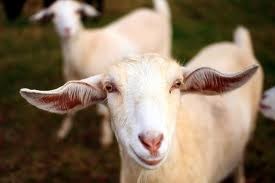Potassium is probably the Rodney Dangerfield of the minerals in ruminant nutrition. It doesn’t get any respect, or attention. However, it is an extremely important nutrient that is involved in maintaining the acid-base relationship in the body, water balance, muscle contractions, nerve impulse transmissions, and many enzymatic reactions in the body and rumen. Even with all of its importance, seldom do you see it in sufficient levels in pasture supplements to correct the large deficiencies we see in dormant forages in winter.
Potassium leaches out of dormant plants very readily as it is highly soluble in water. So, the more rain that falls on dormant forages, the lower the mineral level will get. It is not unusual to see forage levels as low as 0.23% in January or February. With animal requirements ranging from 0.60 to 1.10%, you can readily see that potassium can be the most deficient mineral in a ruminant’s diet in the winter.
It is remarkable that ruminants can do as well as they do in low potassium situations, when the mineral is involved in so many body functions. But they do. For many years, most of our livestock have been deficient in potassium by the later part of winter.
The body has no storage area for potassium, however, there has to be some re-cycling or saving function that maintains levels in the body that is required for base functions. However, I am firmly convinced that animal performance, whether it is lactation or gains, it enhanced by supplementing with enough potassium to meet the ruminant’s needs.
During the growing season, potassium can cause problems from being at too high of a level in the plants the animals eat. Very high potassium levels, in the range of 2.5 to 3.5%, in very young, vegetative forages can cause imbalances with calcium and magnesium resulting in a condition referred to as tetany, or staggers.
Because of the propensity for tetany to develop on wheat fields, it is sometimes referred to as “wheat tetany”. However, it can occur on any vegetation type where the potassium levels are much higher than the calcium and magnesium levels combined.
There is a correlation with the magnesium requirement and tetany, in that an animal with a high magnesium requirement, such as during lactation or a high level of gain, is much more likely to develop tetany than a non-lactating female, or a young animal at a lower level of gain. The only real defense for tetany is to make sure animals have a sufficient level of calcium and magnesium supplement when grazing on lush pastures, especially monocultures such as wheat, or other small grain crops.
Mineral supplements in situations like this need to have around a 6% magnesium level for non-lactating animals, and a 10% magnesium level for lactating or high gaining animals. Potassium levels in these types of mineral supplements should be very low to none, because adding potassium would just create more of a problem.
The most common source of potassium is potassium chloride (KCl). Many of you may recognize that potassium chloride is a salt substitute the many people with high blood pressure use. It is palatable, and not too expensive to add to a mineral mix. Potassium sulfate (KSO4) is also a readily available source of both potassium and sulfur, both of which are normally deficient in the dormant forages. If, however, you happen to have a high sulfur water source, you may want to stay away from potassium sulfate because high levels of sulfur intake can hinder utilization of several trace minerals.
High protein ingredients like cottonseed or soybean meal have high levels of potassium, 1.39% and 1.98% respectively, so when you feed a supplement with a lot of natural protein from these sources, the livestock get a good bit of the mineral. However, it is generally not enough in a year when there are no cool season grasses or forbs available.
In years when there are cool season forages available in the winter, the potassium level may be sufficient for your livestock and wildlife. That’s why a forage sample or two each year is a good idea to allow you to know what mineral levels you need in your supplements.
It is as important as the headliners like phosphorus copper and zinc. Take steps to know the potassium levels in your forages, and make sure your supplements have sufficient amounts to meets the needs of your animals. Their performance will show the difference.
Interested in our mineral products? Click here.


